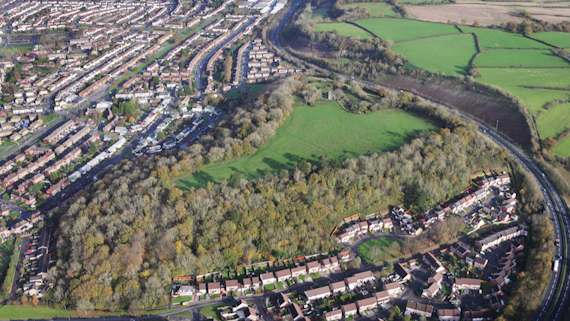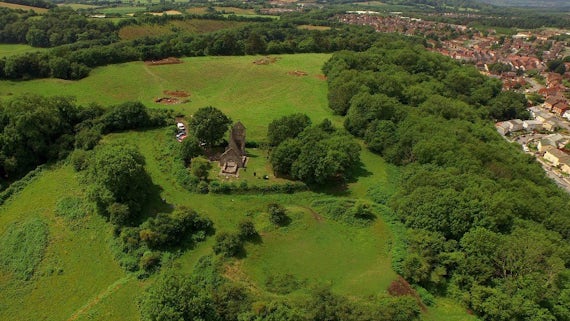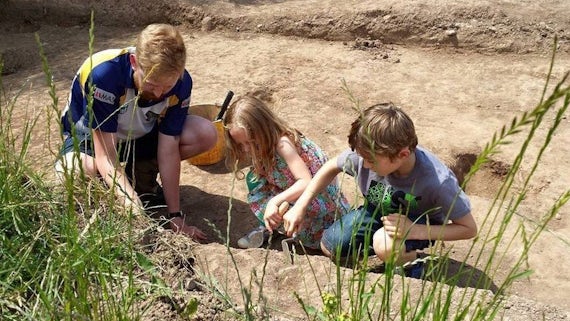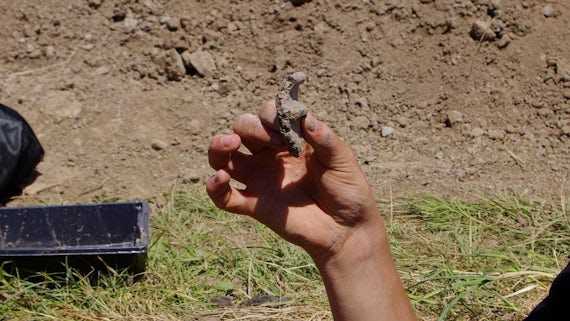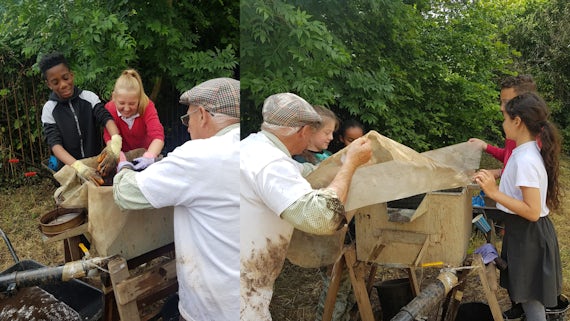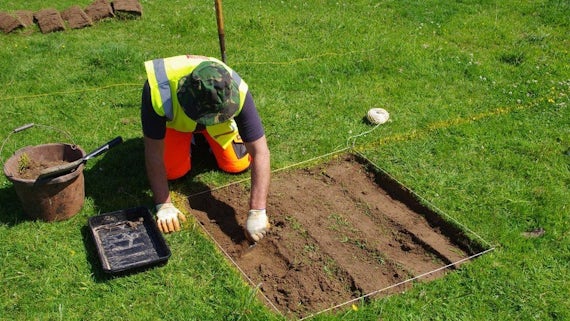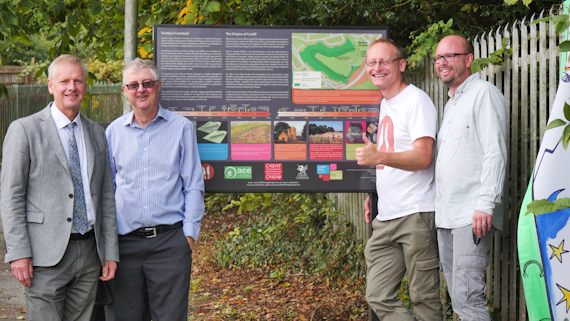The Hidden Hillfort: harnessing heritage to improve lives, community and culture
Creating new pasts and new futures: community project uncovers 6,000 years of heritage to address challenges in the present.

Caerau and Ely Rediscovering Heritage Project (CAER) has succeeded in putting one of Cardiff’s oldest, largest and most significant archaeological sites on the map.
Exploration of Caerau’s Hidden Hillfort has harnessed heritage to unlock local creativity, talent and community action.
CAER’s achievements
Since establishing the project in 2011 with local community development organisation Action in Caerau and Ely (ACE), the Cardiff University research team has developed a powerful combination of community-focused archaeological digs, historical co-research and co-created art, animation, poetry and film.
Setting out to challenge unfounded negative perceptions of the area by uncovering hidden history, CAER has successfully tapped into one of South Wales’ richest, but least valued, heritage assets to create transformative educational and life opportunities in communities facing significant social and economic challenges.
Working alongside local people to dig up the past and uncover new historical knowledge through the power of community archaeology, the project has traced the origins of this part of Cardiff back over 6,000 years to the Neolithic.
CAER has facilitated significant investment in community projects and infrastructure, securing over £532,000 via 15 research grants. Significantly, 189 local people played an influential role in co-developing an ambitious community regeneration project to transform the site into a heritage attraction, with its successful National Heritage Lottery bid also expanding the capacity and resources of integral partner ACE (at a total value of £2.1million incorporating match-funding).
Awarded the Times Higher Education Award (2017) and NCCPE Engage Award (2014), CAER’s participatory collaborative model now counts as exemplary practice in the UK, recognised by the Arts and Humanities Research Council (AHRC), Higher Education Funding Council for Wales (HEFCW) and Research Councils UK (RCUK).
Why is CAER so significant?
With the community at the heart of its co-production strategies, CAER has changed our understanding of Caerau hillfort, the area, and its inhabitants, revealing unexpectedly long monument occupation and use, exceeding over six millennia.
Archaeological research has contextualised Caerau hillfort and neighbouring Ely within its wider geographical, historical and social landscape, revealing the important role of the hillfort to past communities in South Wales.
Besides identifying anticipated settlement through Medieval and Roman Britain, the community excavations charted multiple phases of Iron Age hillfort construction. But it was the remarkable discovery of an underlying Neolithic causewayed enclosure - only the third ever found in Wales - that firmly planted the Hidden Hillfort on the map. The project has fundamentally altered the perception of Early Neolithic Wales, rebalancing understanding of Iron Age Britain, righting the discipline’s regional bias favouring more affluent southern England.
CAER’s creative community-centred approach is firmly rooted on heritage regeneration, community development and inclusivity, informed equally by community partners ACE and social sciences research. This extends right up to its research on history within living memory including post-war social housing and Ely’s ‘homes fit for heroes’ built on garden village principles.
This multi-award-winning project has enhanced community identity and connection with the past, powered by close working with residents, community partners and groups, local schools, artists, heritage professionals and 4,000+ local volunteers and equal value placed on voluntary and professional contributions.
Facing difficult social and economic challenges but full of talent, vision, activism and solidarity - the local community remains firmly at the heart of CAER. Their hands have unearthed 6,000 years of hidden history and shaped new interpretations for contemporary and future generations. Through exploring and celebrating the past, CAER is enabling a resilient but often marginalised community to harness its potential and shape its future.

What are its greatest impacts?
Consistently ranking in the Welsh Index of Multiple Deprivation, Caerau and Ely are among the top ten most deprived areas in Wales, with unemployment almost five times the UK average (15% compared to 3.8%). And tellingly, only 7% of school leavers from this ward go on to university, less than one in four compared to the UK average (34%).
Against this backdrop, this community-driven partnership has changed local attitudes to heritage and cultural participation, transforming educational opportunities through scholarships and adult-learners’ courses, developing positive community narratives, and improving life opportunities through its research-led engagement and co-production model.
Active in all stages of the project, community members have a stronger sense of place, a closer connection to their heritage and a more positive attitude towards their locality.
Challenging stereotypes and stigma, CAER has succeeded in highlighting the complex histories of its ever-evolving community.
Meet the team
Key contacts
Selected publications
- Davis, O. and Sharples, N. 2020. Excavations at Caerau Hillfort, Cardiff: towards a narrative for the hillforts of southeast Wales. In: Late Prehistoric Fortifications in Europe: Defensive, Symbolic and Territorial Aspects from the Chalcolithic to the Iron Age: Proceedings of the International Colloquium 'FortMetalAges', Guimarães, Portugal. Archaeopress. , pp.163-181.
- Davis, O. and Sharples, N. 2017. Early Neolithic enclosures in Wales: a review of the evidence in light of recent discoveries at Caerau, Cardiff. Antiquaries Journal 97 , pp.1-26. (10.1017/S0003581517000282)
- Vergunst, J. et al., 2017. Material legacies: shaping things and places in collaborative heritage research. In: Researching in Public: Contested Origins, Live Debates & Emerging Legacies for Collaborative Research. Policy Press. , pp.153-173.
- Ancarno, C. , Davis, O. and Wyatt, D. 2015. Forging communities: the CAER Heritage Project and the dynamics of co-production. In: O'Brien, D. and Matthews, P. eds. After Urban Regeneration: Communities, Policy and Place. Policy Press. , pp.113-130.
- Ward, S. 2013. Unemployment and the state in Britain: The means test and protest in 1930s South Wales and North-East England. Manchester: Manchester University Press.
- Sharples, N. M. 2010. Social Relations in Later Prehistory: Wessex in the First Millennium BC. Oxford: Oxford University Press.
